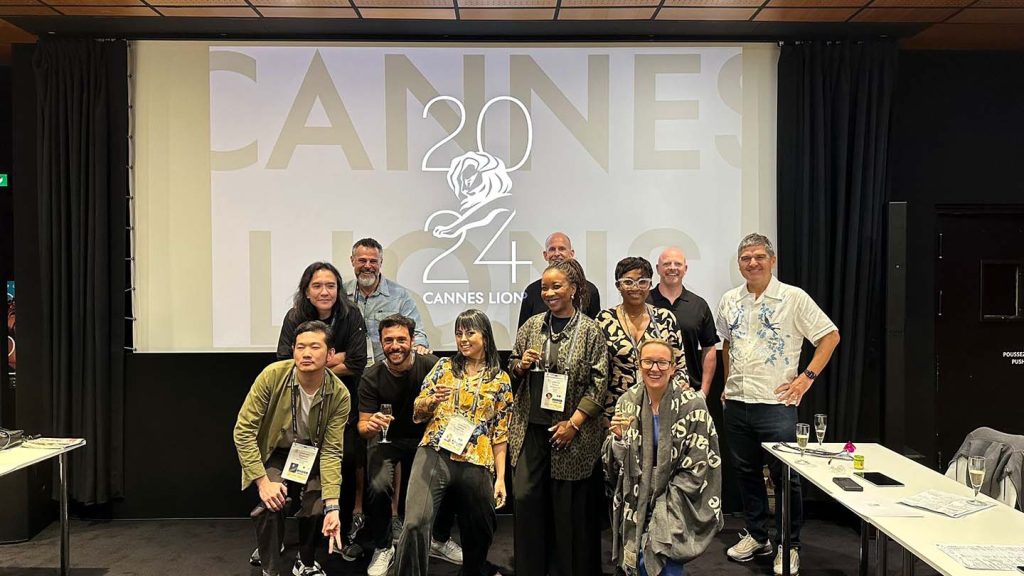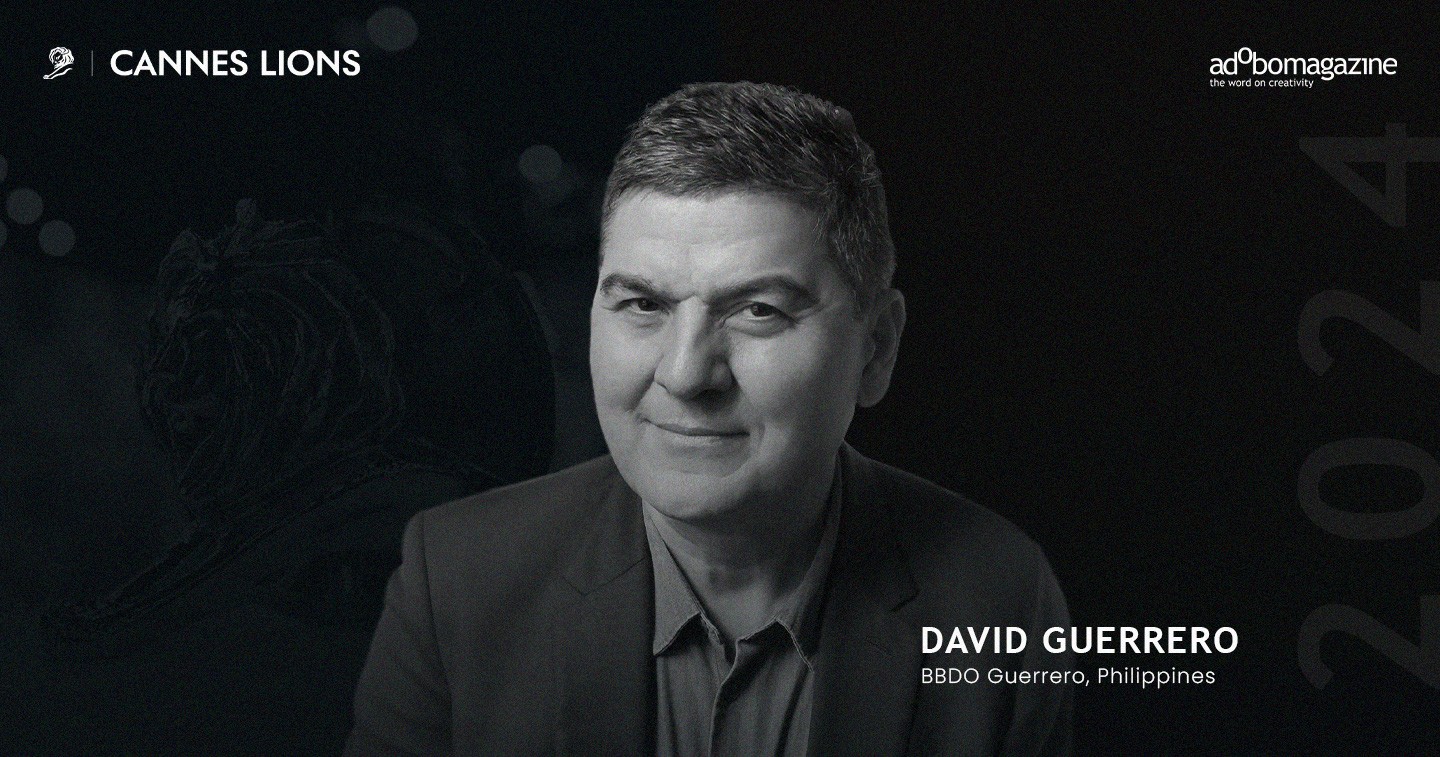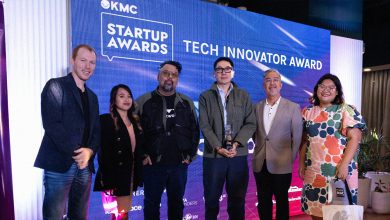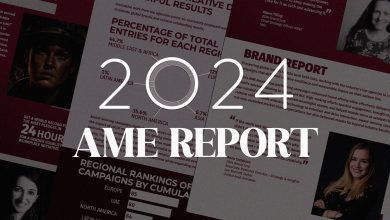CANNES, FRANCE — BBDO Guerrero Creative Chairman David Guerrero took part in the Film category jury board at this year’s Cannes Lions International Festival of Creativity, looking through hundreds of entries from across the globe for the industry’s biggest show. In this exclusive piece, David recalled the rigorous process of narrowing down the finalists and metal winners, and what went down inside the jury room.
So here’s how the Film Lions go. People from all over the world – who think their work stands a chance – enter it in the world’s biggest award show. The organizers then arrange for a jury of proven experience and diverse perspectives to judge the work. There were 1,887 entries this year. So we were divided up into mini-juries with additional help from an extremely qualified set of shortlisting judges, and watched all of our allocated entries all the way through. We ranked each. Then the scores were then aggregated and used to form a shortlist – well, a long shortlist at first of about 250 films. Then the jury come together in one place. That place is a windowless room in the Cannes Palais de Festivals (who cares what time of day it is) and view this long-shortlist together.
This is when a strange alchemy begins to take place. The 10 people, who, for the most part, have never met before, need to exchange points of view about the work and discuss what they do or don’t like about something in a safe atmosphere that allows for some to like one thing and others not to. Above all, the jury is a place for people who are not afraid to speak their minds. Because a lot of the work is exactly what we do all year round, form opinions based on our convictions and then pitch our ideas to a room full of very smart people. Here it’s the same, without job titles, or office polities, or accounts being at stake. Except what we’re dealing with is more precious than money – it’s the currency of acknowledgement, acceptance, approval, and admiration. We think of the people – just like us – who have their hopes riding on our good judgement. It doesn’t make things easier. But it makes our deliberations seem more meaningful.

Our jury president was Tor Myrhen, the VP of Marketing Communications for Apple Inc. Tor encouraged us with a quote from Helmut Krone (creator of the landmark VW and Avis campaigns at DDB) which encouraged us to recognize and encourage the new. Under Tor’s leadership, Apple has won 105 Lions since 2016. He was also responsible for one of last year’s two Grand Prix winners.
And if you’re wondering who did the other Grand Prix, well the person responsible – Ant Nelson from adam&eveDDB – was on the jury too. The rest of the lineup consisted (as I looked around the room) of: Estelle Blemond-Zaïre, EMEA Diversity and Inclusion Strategist from Netflix; Camille Venegas Gomez from M&C Saatchi UAE; Franki Goodwin, CCO of Saatchi & Saatchi London; Gumpon Laksanajinda, CCO of Ogilvy Thailand (with his translator Supparat Thepparat (aka Menn)); Mary Njoku founder of ROK Studio (A Canal Plus company) in Nigeria; Paul Nagy, the Regional CCO of VML APAC; and Rodrigo Jatene, CCO of Wieden+Kennedy LATAM. Everyone brought something valuable to the discussion and every perspective was treated with respect.
Our first task was shortening the long-list. The organizers don’t allow anything to be downgraded once it’s been awarded so this is a process of lifting something from the long-list to the shortlist. But it seems more like knocking out anything that we collectively feel doesn’t fit. We got a brief visit from the “See it Be it” group during the day and we felt like they saw us as a very negative bunch. In any case by the end of the first day – we have watched nearly all of the shortlist again – and refined it from 258 to 190. That final number is what we take to the following day where the job of selecting the metal from that begins.
The Bronze Lion listing begins by us understanding that we can give around 55 metals of any kind. This starts by us collectively agreeing the likely Silver and Golds. That’s the easy bit. After that the methodical process of filling in the rest of the list begins. Brand relevance is a key discussion point – especially in the longer films. And while nothing exists in isolation, originality is vital. Finally, craft comes into it – sometimes in a big way. But we kept saying: we are not the craft jury; Craft counts, but only to the extent it elevates (or holds back) the idea. Campaign entries – which are allowed in some categories – are quite honestly a double-edged sword. Yes you can get more work in the show for one entry fee. But more often than not people like one execution over another.
So by the end of the second day we had a list of metal. And how hard could it be, we thought, to get the Silvers and Gold from this list. Tricky, as it turned out.
Again, we agreed on our must-haves, and these comprised about half the required number. The debates now centered on finer points of which piece of excellent work was more excellent than another. Or alternatively which piece of work was slightly less excellent than another piece. Here’s where we had the most passionate debates – between Bronze and Silver and, in particular, between Silver and Gold. By the time the dust had settled we had two Grand Prix – one from the traditional tv and cinema categories and one from the online categories.
Some observations. There was little outright innovation with the medium itself. As the organizers pointed out, Film is the oldest category in the festival and still one of the most difficult to get right. The two letters most uttered this year “AI” did not get much airtime here, as Tor pointed out in the press conference. We can speculate that the oldest category will be the most resilient to technological change. There were constant reminders throughout the judging of the hundreds of choices and decisions involved in the making of a film: the overall structure and length, the casting, the dialogue, the link to the brand, the link to the heritage of the brand, the quality of the typography, the cinematography, the editing (Don’t linger too long on a joke), the music. But as we kept reminding ourselves – we are not the Film Craft jury. It’s not just about craft. If it’s about one thing, it’s the story. Resist the comfort of the familiar. People know where you are going – so surprise them.
One of our top prizes, Orange: WoMen’s Football, was debated for its craft but the power of the idea, the clarity of the message, and the proven impact of the piece did more than enough to carry it through. On the other hand, our other Grand Prix, for the Sydney Opera House, was celebrated for taking an anniversary film brief and creating an anthem for creativity with its ironic call to “Play it Safe.” This second piece reminds us that film is often driven by an individual vision.
I’d like to believe that our Golds reflected the variety of the work was entered in the show. Long-form comedy: Sammakorn with Not Sampakorn; Short-form comedy: Krungsri with What the Fast; Quirky big brand stuff: Lynx with Robbery; work that celebrates community: Channel 4: idents, Contemporary CSR in Movistar’s Not a game; Classic comedy sketches: Uber with Trains, now on Uber; artful product demonstration: Apple with Tractor, and redemptive emotional storytelling in Apple’s Fuzzy Feelings, and fact-based irony in: Reporters without Borders with The First Speech.
This was a good category for work from Southeast Asia. Apart from the two Thai gold winners Sammakorn and What the Fast, The Philippines grabbed a Silver for Grab’s No Sweat Summer. Judges appreciated the way Grab’s benefits were dramatized in the story. It also helped to point out we are at record levels of heat this year! Singapore picked up a bronze for Prism‘s Concert, considered the best of the three films entered for the brand. Finally, Thailand got two more bronze lions: one for Delight‘s Not very sweet, which was entered as a campaign; and for the only non-comedic winner from the region, Colgate’s The Boxer.
All in all it points to a huge opportunity for us in this region to use the continuing power of video as the core element in our campaigns and to work with clients on bringing the medium to life with learnings from the world on best practice to get the most out of it. After all, no one except judges of advertising HAS to watch any piece of brand-sponsored content. So we constantly have to be thinking of how to make it attractive for other people to do so. Even Elon Musk had a point of view about advertising. It should be something that “doesn’t make you regret the time you spent watching” it. So here’s to less regret – and more remembering of that fact – in the year ahead.









